Genre: Strategy Developer: Sprytes Publisher: Electronic Arts Players: 1 Released: 1993
Before he soiled his reputation by promising the moon and failing to deliver, Peter Molyneux was praised for letting mortals play god. He put his development house, Bullfrog Productions, on the map in ’89 with Populous, the game which invented the “god game” genre; and Molyneux continued to explore the concept with a parade of computer game hits. Powermonger, Bullfrog’s third game – wedged in between Populous and its sequel – is generally put in that company, yet it’s not really much of a god game. Instead, Power Monger is a loose playing military combat game in which you’re given an army and told to conquer the world, and with no divine hand in play, conquest means expanding your army and killing all those who would oppose you.
The world is divided into 195 rectangles across a map, and we begin Powermonger by seeking to dominate the top-left corner. It’s occupied by just two towns whose citizens are pledged to the leaders of the CPU armies you’ll be contesting later, but for now, Jayne III and Jos XVIII have neglected to leave any armies behind to defend their land. We choose not to slaughter the townspeople, adopting a passive posture when we march in and capture their land, food, and weaponry. If Powermonger were a modern game like, say, Fable, then surely the game would place a greater emphasis on being a “good” captain or a “bad” captain, but Powermonger does not. You won’t grow a goatee and sharper eyebrows by killing everything in sight, but it will make it tougher on you down the road when you wish you could recruit those freshly slain corpses you left behind in that last village.
The game’s use of posture makes Powermonger a bit of an odd duck as it influences pretty much every action at your disposal. For instance, if you want to recruit men from a town to pad your troop’s numbers, you can take 25% of them by issuing the command with a passive posture, which gains you a few followers and leaves the town in good standing. A neutral posture secures 50% of the available citizens to add to your brigade, while the aggressive posture will take every last drop from the town and leave it barren. Your army’s current and future needs will dictate how to proceed, as pillaging a town too much limits its ability to replenish its supplies and population. Likewise, you’d want to make sure you can feed any recruits you take on as no one will fight for you on an empty stomach. It’s not a terribly complicated balancing act, but some light inventory management is required to keep your Powermonger train rolling.
Unfortunately, Powermonger makes for a somewhat unsatisfying ride. The bulk of the game focuses on either attacking towns and armies, inventing tools and weapons, and acquiring food and items from the towns you capture. Want to win a battle? Just make sure you have more guys than the opposing army when you initiate conflict. Want to enhance your army with weapons? Simply look for a town under your rule with a workshop and click a button to choose to invent random items which will hopefully be useful in accomplishing your goals. While the game may be appreciated for its time-saving features such as automatically dispensing weapons among your troops, the level to which Powermonger is streamlined can make the game feel quite shallow. No matter the path you cut through the land, you can’t escape the cycle of 1) bolstering troops by conquering smaller nearby towns, 2) defeating a larger army, and 3) repeating until you win. That’s not just a flippant summary, either, as there’s surprisingly little strategy and interaction involved in playing the game. I feel more like a spectator giving suggestions to my captain as he marches his way across the land. The game is just not hands-on enough for my taste to feel like I’m truly an army captain or a god.
Of course, gameplay wasn’t the main selling point when Powermonger launched. Molyneux invites you into his digital world, a magical place which exists with or without you. So detailed is Powermonger that each little citizen has his or her own name, history, routine, and whatnot. People age, bear children, and die. Everyone and everything has a unique identity. The scope of such a game was pretty stunning at the time, but in practice, you find it’s all just window dressing. It’s even worse on the Genesis, as the lack of a mouse makes clicking on the little guys zipping around the map as infuriating as it is pointless. Making matters worse is the huge text window gobbling up the bottom third of the screen, wasting valuable screen real estate as it is devoted to these largely needless bits of backstory.
Not all the details Molyneux packed into this world is wasted, however. I rather like how the game uses carrier pigeons to send instructions to other commanders – which includes the flight time delay – along with having storks deliver newborns to expectant couples in town. It’s neat how your army can leave its mark on the world via destroying buildings and whatnot with a catapult or cannon, and I love how those defeated in battle rise from the field as little ghosts. By and large Powermonger is brimming with beautiful, tiny details, but you’ll also overlook many of them while playing the game. You’re not going to click on every building and person to get a sense of their place in the world. While it’s awesome that the option exists at all, you’re unlikely to find and kill enemy carrier pigeons during a run through the game. The rain and snow cycles are a nice touch as well, but while they do technically impact the action by slowing down your army a bit, there’s not much to be done about it, so you just soldier on through rain or shine. The lack of more direct control makes so many of the little details and elements of Powermonger easily missed or ignored, making you wonder why Molyneux even bothered including them in the game.
I also find the ability to rotate and zoom Powermonger‘s marvelous 3D polygonal landscape an empty benefit as altering the viewpoint rarely provides any significantly enhanced view of the field, and it’s too cumbersome to bother with during play. Power Monger on Genesis isn’t nearly as slick as the PC game, clumsily dividing the screen and asking its players to cycle through each of them depending upon the action taken. There are five separate windows: the aforementioned gigantic text display, a slim column along the right for commands, the main viewing window showing the land and your available captain(s), a map of the land for jumping around, and a box for the scales which determines if you are in a winning position or not. Yes, the balance of the scales is what determines if you are fit to win a map. Once you’ve conquered enough towns and armies to tip the balance in your favor, you are free to retire to claim victory. It’s very anti-climactic, and the game has an ending to match. Maybe Molyneux allowed players to decide when a given round ends in case they wanted to take in more of the sights and details, but it’s just not satisfying way to conclude the game.
Powermonger‘s design just doesn’t feel right. There are commands available to issue which you’re unlikely to ever use, such as the option to send your army home, which has each individual soldier returning to the town from which they originated… but why would anyone in his or her right mind do that? There’s an option to take a captain and have him spy on an enemy army which can produce some useful information, but if he gets caught, they’ll kill him, which pretty much negates any incentive to send him out. Also, for whatever reason, Molyneux has it so that if you lose a captain during a game, then all other captains and the soldiers they command become inaccessible as the chain of command has been broken. This probably seemed “realistic” and interesting at the time, but I find it flat out stupid. It’s like the carrier pigeon delay; it’s commendable for trying to add a new wrinkle on the strategy genre, but in practice, it’s just strapping a beak to what any other game would be annoying input lag.
The game pushes the realism of the world and all of its gratuitous complexities while neglecting the repetitive nature of the combat and lookalike maps. The inability to shape the land as in Populous leaves the polygon landscape feeling like a wasted opportunity, and the sluggish response on the Genesis further dampens the experience. It’s interesting to note that while the Genesis game struggles to recreate the polygon map as it appears in the original Powermonger, the Sega CD port outright replaces the polygons with sprites; and while that change may upset purists, the game runs and looks so much better as a result. Go to the next level, and you’re treated to tons of additional animation, far better screen layout including a larger play window, and better sound and music as you’d expect. I’m so used to Sega CD editions of games being late releases of the cartridge material with redbook audio and maybe some extra levels slapped on, and it really surprised me just how much improved the disc version is. It just makes the cartridge look that much worse by comparison.
It feels funny to think how much I was looking forward to revisiting Powermonger for this review. I couldn’t afford a computer growing up, so I spent my childhood lusting after the original when it appeared in Video Games & Computer Entertainment. After finally spending some time with the game, I can see that I, too, unknowingly bought into the hype. It’s as if Molyneux looked at Risk and thought to himself, “This is just too fast and engaging. I can fix this.” Powermonger is a novel experiment and lackluster strategy game made worse when playing it on the Genesis, where its substandard control scheme and sluggish gameplay drag down a game which already was never as excellent as it was made out to be.
SCORE: 4 out of 10

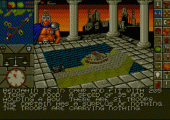
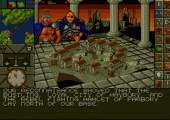
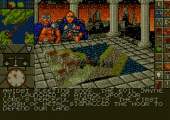
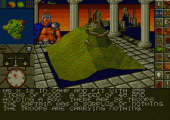
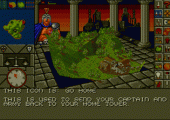
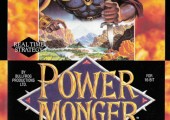
Recent Comments